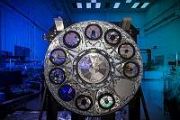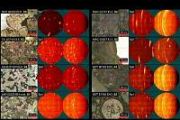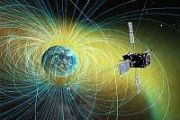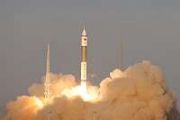
Copernical Team
Five ways NASA supercomputing takes missions from concept to reality
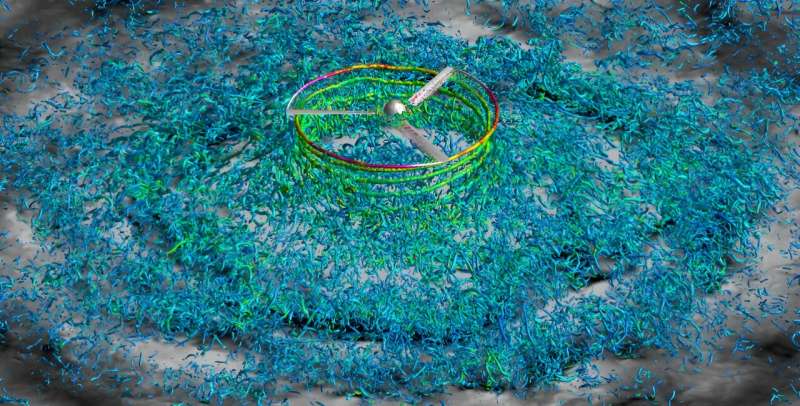
Bioengineers send cardiac muscle samples into space to study heart cell biology in microgravity
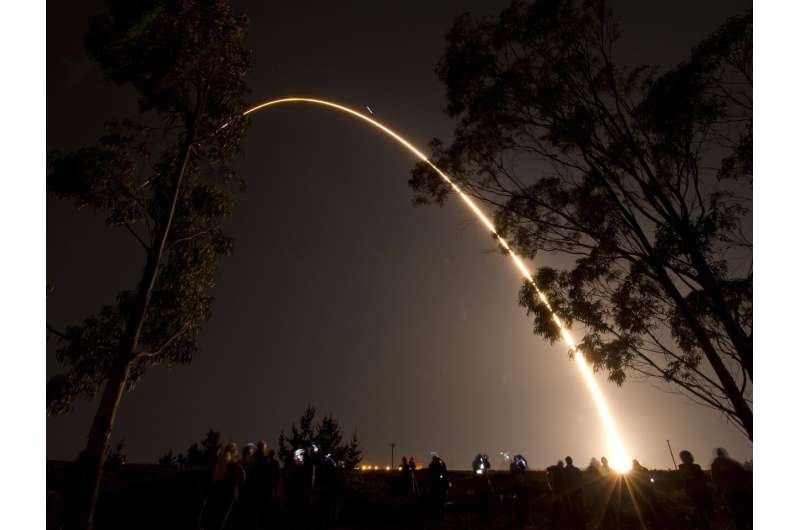
Mount Sinai's Cardiovascular Research Institute is sending bioengineered human heart muscle cells and micro-tissues into space for the first time on NASA's 29th SpaceX commercial resupply services mission, which launched Thursday, November 9. The "SpaceX CRS-29" mission is sending scientific research to the International Space Station (ISS), where the samples will stay for approximately 30 days before returning to Earth.
Through this experiment, Icahn School of Medicine at Mount Sinai researchers aim to gain a better understanding of how cardiac muscle cells, or cardiomyocytes, adapt to extreme biological stresses and how microgravity and other features of space travel impact cardiomyocyte function. The findings will help scientists find better ways to study heart cell biology in future space experiments.
Understanding the capabilities and limitations of such heart cells to survive is not only important for the health of astronauts but also a first step toward future efforts in space-based tissue engineering, organoid fabrication, and bioprinting, which are all important players in the emerging economy of biomanufacturing in the microgravity environment known as low Earth orbit.
Mount Sinai is partnering with Space Tango to run this experiment.
No tricks, just treats
 Image:
No tricks, just treats
Image:
No tricks, just treats Webb, Hubble combine to create most colourful view of Universe
 Image:
Webb, Hubble combine to create most colourful view of Universe
Image:
Webb, Hubble combine to create most colourful view of Universe Europe’s quantum decade extends into space

Europe – and the world – is in the midst of the ‘quantum decade’: a period in which the peculiar properties of matter that manifest at the very tiniest of scales are being transformed from mere scientific curiosities into the basis of practical technologies and products. The result? Major leaps forward in communications, navigation, computing and environmental sensing.
The same is true in space: ESA is currently sending a quantum-enabled probe to Jupiter, developing communications based on quantum technologies and planning flying a quantum clock to the International Space Station, as part of its quantum technology cross-cutting
Blast from the past: gamma-ray burst strikes Earth from distant exploding star

An enormous burst of gamma rays, detected by ESA’s Integral space telescope, has struck Earth. The blast caused a significant disturbance in our planet’s ionosphere. Such disturbances are usually associated with energetic particle events on the Sun but this one was the result of an exploding star almost two billion light-years away. Analysing the effects of the blast could provide information about the mass extinctions in Earth’s history.
Lost in space: $100,000 tool bag from NASA spacewalk
 Every construction worker who ever accidentally left their tools at their worksite now has something in common with NASA astronauts, who lost a tool bag worth $100,000 during a spacewalk on Nov. 1, the space agency announced.
The white satchel, which can now be seen orbiting the Earth with a telescope or a good pair of binoculars, is hovering about 200 miles above the planet. The bag el
Every construction worker who ever accidentally left their tools at their worksite now has something in common with NASA astronauts, who lost a tool bag worth $100,000 during a spacewalk on Nov. 1, the space agency announced.
The white satchel, which can now be seen orbiting the Earth with a telescope or a good pair of binoculars, is hovering about 200 miles above the planet. The bag el Big bang: Dutch firm eyes space baby
 Climate crises, nuclear Armageddon, or a sudden meteor strike - it's clear humanity could do with Planet B. But first we need to learn to reproduce safely in space, says Dutch entrepreneur Egbert Edelbroek.
Edelbroek's firm, Spaceborn United, is pioneering space sex research, with the eventual aim of natural conception and birth in the partial gravity environment found on Mars.
The chal
Climate crises, nuclear Armageddon, or a sudden meteor strike - it's clear humanity could do with Planet B. But first we need to learn to reproduce safely in space, says Dutch entrepreneur Egbert Edelbroek.
Edelbroek's firm, Spaceborn United, is pioneering space sex research, with the eventual aim of natural conception and birth in the partial gravity environment found on Mars.
The chal ILLUMA-T launches to the International Space Station
 On Nov. 9, a Lincoln Laboratory-developed laser communications terminal integrated on a NASA-built payload was launched aboard a SpaceX Falcon 9 vehicle. Cameras inside the launch vehicle enabled the laboratory and a NASA Goddard Space Flight Center team to watch as the payload headed for the International Space Station (ISS), a football-field-sized research platform orbiting Earth about 250 mil
On Nov. 9, a Lincoln Laboratory-developed laser communications terminal integrated on a NASA-built payload was launched aboard a SpaceX Falcon 9 vehicle. Cameras inside the launch vehicle enabled the laboratory and a NASA Goddard Space Flight Center team to watch as the payload headed for the International Space Station (ISS), a football-field-sized research platform orbiting Earth about 250 mil Cosmic Wander Takes Flight: D-Orbit's 12th Mission Elevates Space Industry Standards
 Fino Mornasco, Italy (SPX) Nov 14, 2023
D-Orbit, a leader in space logistics and orbital transportation, marked another milestone with the successful launch of its 12th commercial mission, Cosmic Wander, aboard SpaceX's Transporter-9 mission. The mission took off at 10:49 AM PT from Vandenberg Space Force Base in California, deploying the ION Satellite Carrier into a sun-synchronous orbit at 52
Fino Mornasco, Italy (SPX) Nov 14, 2023
D-Orbit, a leader in space logistics and orbital transportation, marked another milestone with the successful launch of its 12th commercial mission, Cosmic Wander, aboard SpaceX's Transporter-9 mission. The mission took off at 10:49 AM PT from Vandenberg Space Force Base in California, deploying the ION Satellite Carrier into a sun-synchronous orbit at 52 
















